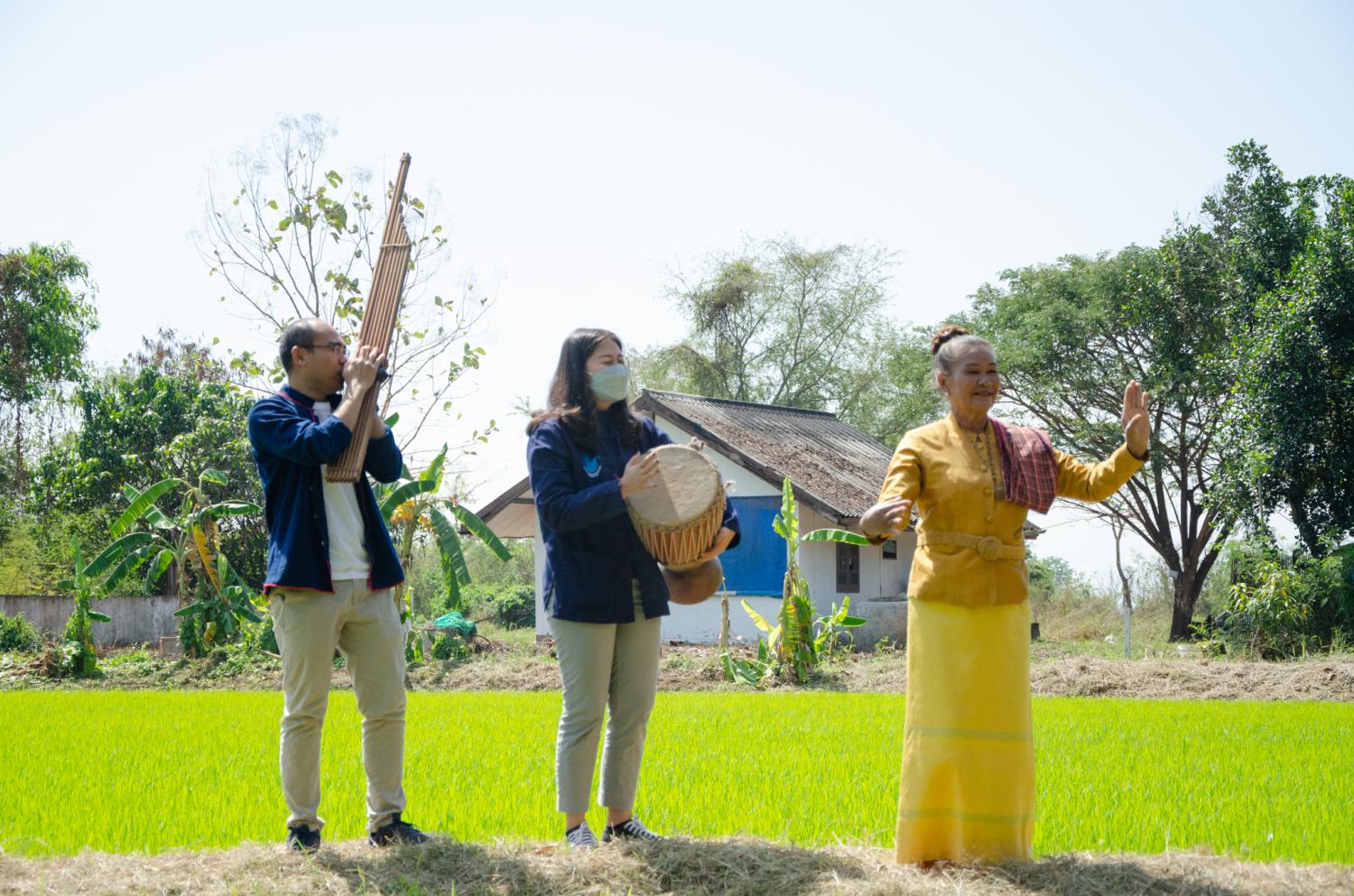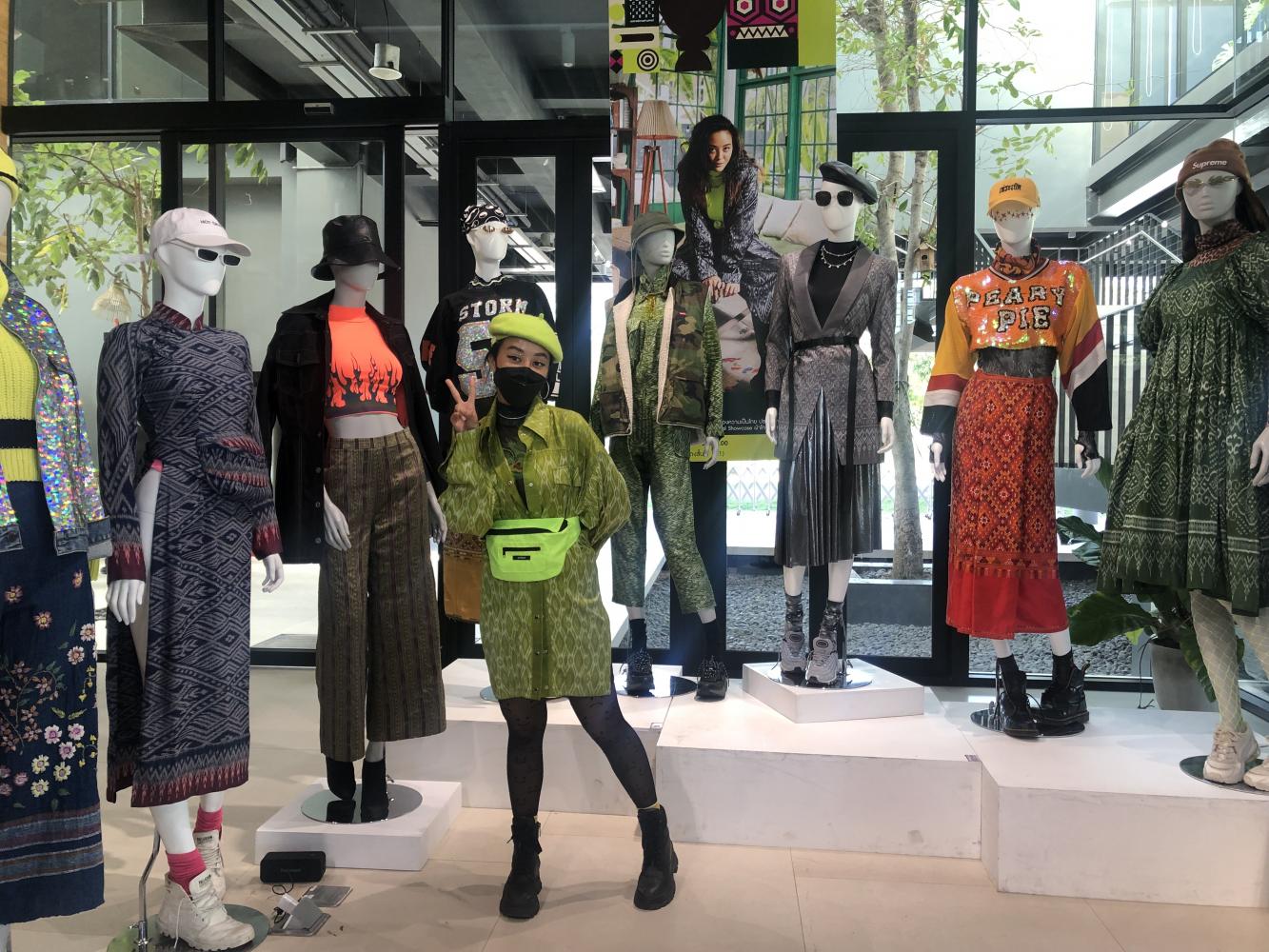
With a culture of intellect and entertainment, northeastern Thailand is a hotbed of new ideas and inventions. It is also a diverse region that excels in cuisine, handicrafts and folk music.

To connect all of Isan's local assets with advanced technology to create new, unexpected possibilities and add more value to the country's local economy and improve quality of life, the Creative Economy Agency (CEA) in collaboration with Thailand Creative & Design Center (TCDC) and other government agencies recently held "Isan Creative Festival" in Khon Kaen. Under the theme of "Think Link Things", the festival wrapped up yesterday.
"The second annual festival offered 19 exhibitions and over 100 exciting activities in two Khon Kaen districts, Srichan and Kungsadam," said Apisit Laistrooglai, executive director of CEA.
"In fact, our design week is different from Bangkok and Chiang Mai as the festival covers other northeastern provinces and not just Khon Kaen. This is because we want to celebrate Isan's identity and promote a creative economy. We want to support local businesses and universities by training new graduates to apply their knowledge to be more creative."
This festival showcased an exhibition titled "Srichan-Kungsadan Innovation District" to illuminate the modern concept of economic mobilisation and growth to fulfil local business managers' potential and ambition.

Apisit further explained that this year's theme was derived from Isan folk lullabies Ting Ling Ting, "which has a similar sound to the English phrase 'Think Link Things'. It also represents the collaborative idea of how all cultural assets in Isan can be connected to creativity. This concept was actually invented from mistakes we experienced in last year's theme titled 'Isan Crossing' ".
Atchaka Sibunruang, chairman of CEA, explained that those mistakes were "what we learned from the projects last year and made better this year."
In 2022, the public organisation continues to improve the prototype of the Light Rail Transit system for greener transportation and a more sustainable economy. Khon Kaen's mayor, Teerasak Teekhayuphan, first proposed the LRT project and the government later approved it in 2018. However, Teerasak claimed that the project has not yet been completed due to poor finances until a Chinese state-owned company signed a joint venture for construction.
In fact, this LRT would facilitate travel between Kungsadan and Srichan during the festival. CEA opened the platform for public opinions with its project "Khon Kaen Urban Transit" in this festival so that local people could share their views about the city's development.

"Lunch & Learn" was another project following 2021's success. As the quality of learning is associated with school lunches, the former "School Yard Lunch Project", in which the government allocated 21 baht per student, had more than 10 dishes to appeal to children.
This year, the "Lunch & Learn" project focused on new issues such as food security, local food production and management systems. By working with the Ban Non-Chai Municipal School and Khon Kaen University for six months, the research team explored restrictions of school lunch menus and eventually discovered six interesting facts.
Moreover, there were gastronomy exhibitions at "Isan Creative Festival" to instil healthy lifestyles and encourage people to become more creatively engaged in cultural heritage.
After the introduction of refrigeration and fast delivery reduced pickling herbs and other fermented foods from dining tables, a project titled "Isan Flavour Library" represented the wisdom of local fermentation in Thai cuisine which has been passed down from generation to generation since the Neolithic Age.

Similarly, the exhibition "Local Immunity" showed the growth of Thailand's food industry from all regions and national trends in food production as well as consumption. In the post-pandemic era, people will eat food as medicine to increase immunity and relieve health concerns. In this way, this showcase offered a source of raw ingredients as the "Immune Boosting Kitchen", including traditional medicine and local recipes, to create a balance of the human body's elements.
The CEA also provided opportunities to skilled local artisans, including fashion designers, creators and entrepreneurs from all Isan districts to share their cultural identity, inspiration and creativity in modern pieces of art in "Professional Showcase".

This group exhibition featured Khon Kaen Gallery's wooden collection of sculptures; Savor's signature perfume that reflects Isan aesthetics and folklife with an elegant scent of ylang-ylang and lotus; Wanyaki's ceramic vases that portray the movement of clouds in the blue sky, natural energy from the mountains and the crystal clear water of rivers; and Nichaceramics' "Faithfulness" collection of ceramics inspired by Hoop-Taem or ancient wall paintings at Sisaket temple in Phetchabun. In "Faithfulness", the young ceramic artist applied Hoop-Taem's lines, soft colours and bizarre shapes to create animals with a whimsical sense of humour.
The "Professional Showcase" also displayed Worawikran Kongputtikhun's unique, delicate and sweet design of holy basil rings and necklaces under the theme of "Faith and Healing". During the pandemic, many people started looking for alternative remedies or traditional herbs to cure pains and other initial symptoms. In this way, the jewellery designer explored this theme of belief through sacred objects. Later, she connected the faith with medical plants and finally designed holy basil amulets in various forms.

Other local brands such as Tongkula and Mathara took part in this group event as well and explored Isan's cultural art through the Mudmee collection. The award-winning, sustainable clothing brand Jujitaip also released the Shade collection of hand-dyed scarves and hand-woven dresses in soft pastel colours at this festival. Through its natural process, this zero-waste brand used organic cotton fabric and developed traditional knowledge of plant dyeing based on Thai-Isan wisdom to create each piece of clothing.
From make-up artist to Thai-textile lover, Amata "Pearypie" Chittasenne broke norms, boundaries and the limitations of traditional and contemporary Thai cultures in her solo exhibition "Thai Swag" to mix and match silk and mudmee fabrics from different provinces in Isan with her brand-name clothes and accessories.

This showcase also featured Amata's 12 favourite looks with a combination of her Parisian fashion and personal style. Previously, the former beauty blogger tried to find a new passion and explore the new field of arts in her hometown after becoming fed up with cosmetic art. Later, she spent a few years learning indigenous art, including natural dying and textiles techniques from skilled weavers in Surin, Buri Ram, Uthai Thani and Sakon Nakhon.
Furthermore, the exhibition "Isan Solution" at the TCDC resource centre featured a simple, plain and non-decorative collection of Isan handicrafts, including Mingei artworks to reflect humans' reliance and many years of practice in local craftsmanship. Another open space told the tale of "Baan Hao" by blending local wisdom and cultural treasures with new innovations, vibrant design and creativity in "Isan, Our Home (Town)".

This group exhibition utilised advances in technology to transform a few towns of high potential such as Sakon Nakhon and Nakhon Ratchasima into Creative Economy Areas with cultural elements. Additionally, it featured Mahasarn Craft, which embraces weaving processes and produces a variety of textile items with its unique pattern, and Korat Crafting Lab where skilled woven artisans proposed new ideas to develop the Korat silk industry and weaving culture since this incredibly soft fabric is a way of life in Korat. Apparently, different designs and weaving patterns shared history and express local identity

Like superb craftsmanship, traditional Lao music and dance molam relates family folklore or a sad unrequited love story. Wandee "Molam Udomsilp" Polthongsathit, a 73-year-old artist from Molam House Hopping, provided a live dance performance to preserve long-thriving Isan culture.
This local culture, including supernatural beliefs such as the legend of nagas, was depicted in a light and sound performance titled Projection-Mapping Show at Sawasdee Hotel. As Khon Kaen is not an old town, this temporarily closed hotel located in a commercial hub like Srichan and full of agricultural and scientific innovations was selected to share Isan's way of life.








